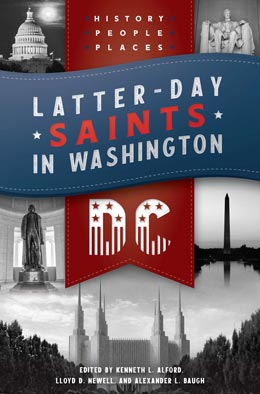Church and State: The National Park Service and Nauvoo
Scott C. Esplin
Scott C. Esplin, “Church and State: The National Park Service and Nauvoo,” in Latter-day Saints in Washington, DC: History, People, and Places, ed. Kenneth L. Alford, Lloyd D. Newell, and Alexander L. Baugh (Provo, UT: Religious Studies Center, Brigham Young University; Salt Lake City: Deseret Book), 447‒64.
Scott C. Esplin was a professor of Church history and doctrine at Brigham Young University when this was published.
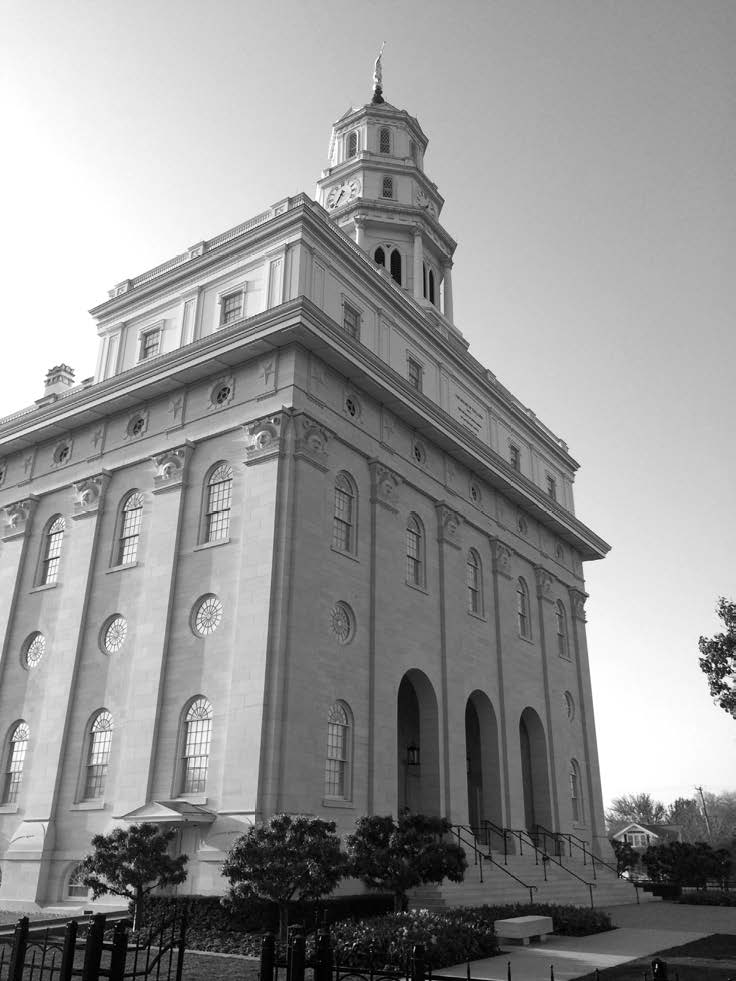 The Nauvoo Temple. Photo by Gogogoff, Pixabay.
The Nauvoo Temple. Photo by Gogogoff, Pixabay.
There is a rich history of Latter-day Saint interaction and influence in Washington, DC, as the essays in this volume have demonstrated. Dictated by revelation and implemented through decades of practice, The Church of Jesus Christ of Latter-day Saints has sought redress from the federal government (Doctrine and Covenants 101:76) and, more recently, has provided “honest . . . wise . . . and good” men and women to serve in public and private ways in various capacities within the federal district (Doctrine and Covenants 98:10). The stories of its history, people, and places make Washington an overlooked but important part of the larger Church narrative. But the relationship between the Church and Washington is reciprocal. One federal agency in particular that has had important interactions with the Church has been the National Park Service, a significant curator of national memory and one of several agencies that shapes life in the nation’s capital and beyond.[1]
Washington, DC, is a monument city. The District of Columbia boasts as many as twenty-five national parks, trails, and monuments, seventy-four national historic landmarks, and more than six hundred sites on the National Register of Historic Places, all of which attract more than forty million visitors each year.[2] The National Mall, frequently referred to as “the nation’s front yard” and “a center of our collective history and art,” attracts more visitors than Yellowstone, Yosemite, and Grand Canyon National Parks combined and—like these and many other American treasures—is administered by the National Park Service.[3] Disproportionate to other cities nationwide, sites occupying as much as 27 percent of the total land area in the District of Columbia are interpreted by Park Service employees, patrolled by Park Service police, maintained by Park Service crews, and ultimately managed by the National Park Service director officed in the city itself.[4] In many ways, the Park Service may be among DC’s most visible federal entities.
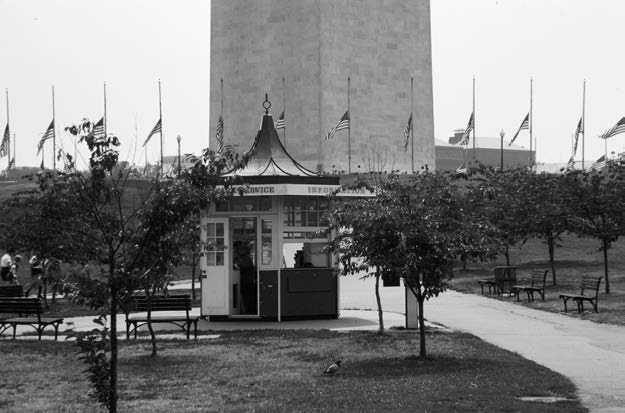 National Park Service information booth in front of the Washington Monument. Photo by Fred Bell, National Park Service History Collection.
National Park Service information booth in front of the Washington Monument. Photo by Fred Bell, National Park Service History Collection.
As a federal agency, however, the influence of the National Park Service extends far beyond the bounds of the federal district. Charged with preserving “unimpaired the natural and cultural resources” of the United States,[5] the National Park Service has an expansive mission that often intersects with the interests of private groups. Designating historic sites for preservation can be controversial, especially when it overlaps with religious history. Throughout the twentieth century, the Park Service partnered with the Church to develop historic sites celebrating a shared history. By this means, the federal government touched the lives of hundreds of thousands of Latter-day Saints.
This essay examines the involvement of the Church with the federal government, primarily through National Park Service directors Conrad Wirth (1951–64) and George Hartzog (1964–72), in designating and preserving Latter-day Saint sacred space. Also, the support provided for the development of Church historic sites is explored, as are the reasons the partnership was dissolved. Additionally, the manner in which Church leaders engaged in the country’s larger historical narrative through organizations like the National Park Service is traced.
Overview of the National Park Service
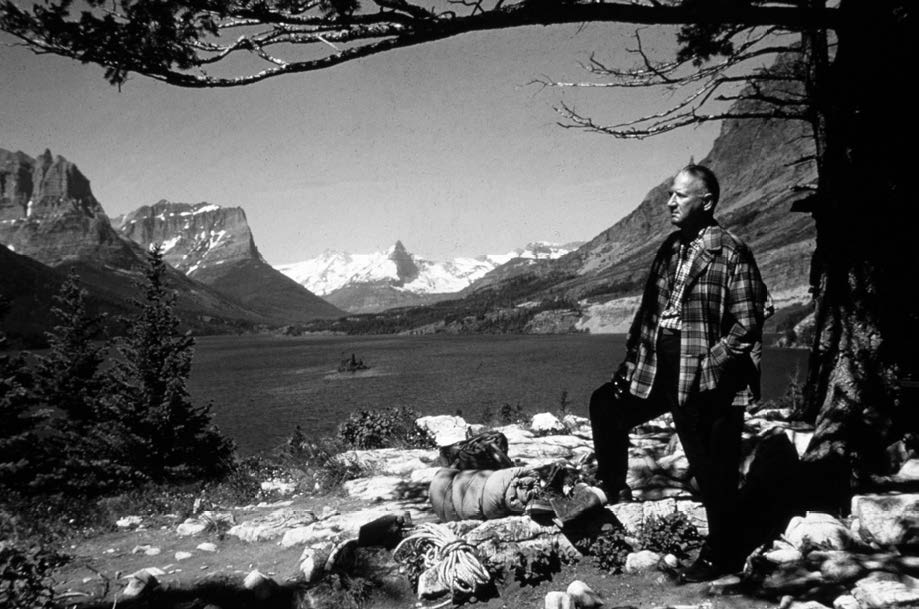 National Park Service Director Conrad L. Wirth (1951–64) at Glacier National Park. Photo by Jack E. Boucher, National Park Service History Collection.
National Park Service Director Conrad L. Wirth (1951–64) at Glacier National Park. Photo by Jack E. Boucher, National Park Service History Collection.
Formal preservation of natural and historic space within the United States by the federal government began in 1872 when Yellowstone National Park was designated “as a public park or pleasuring-ground for the benefit and enjoyment of the people” and placed “under exclusive control of the Secretary of the Interior.”[6] Expanding the reach of the federal government, the Antiquities Act of 1906 granted the president of the United States authority to designate “historic landmarks, historic and prehistoric structures, and other objects of historic or scientific interest” as national monuments.[7] The National Park Service, a federal bureau under the direction of the Department of the Interior, was formed in 1916 by the Organic Act. The legislation dictated that “the service . . . shall promote and regulate the use of the Federal areas known as national parks, monuments and reservations . . . to conserve the scenery and the natural and historic objects and the wild life therein and to provide for the enjoyment of the same in such manner and by such means as will leave them unimpaired for the enjoyment of future generations.”[8] Beginning in 1916, the Park Service took control of the thirty-five existing national parks and monuments. Seventeen years later, two executive orders issued in 1933 consolidated additional properties including national military parks, battlefield sites, monuments, and miscellaneous memorials under the head of the National Park Service, creating “today’s truly national system of parks—a system that includes areas of historical as well as scenic and scientific importance.”[9]
The Historic Sites Act of 1935 significantly expanded the Park Service’s areas of focus, declaring that “it is a national policy to preserve for public use historic sites, buildings, and objects of national significance for the inspiration and benefit of the people of the United States.” The act specifically charged the National Park Service to identify historically important locations and to “restore, reconstruct, rehabilitate, preserve, and maintain historic or prehistoric sites, buildings, objects, and properties of national historical or archaeological significance and where deemed desirable establish and maintain museums in connection therewith.”[10] At present, more than one hundred years after its founding, the National Park Service manages an extensive network of more than four hundred properties, including parks, monuments, trails, sites, and recreational areas.
In addition to actively managing properties, the National Park Service oversees federal recognition of historic significance for thousands of additional sites. In 1960 the agency initiated the National Historic Landmarks program, a designation reserved for the sites of greatest significance. To qualify, sites and their stories must be important to the history of the entire nation rather than to individual communities or states. Additionally, the sites must possess a high level of historic integrity. Nearly twenty-six hundred properties currently enjoy the designation of National Historic Landmark.[11] In 1966 the National Park Service also began curating an expansive list of locations, known as the National Registry of Historic Places. Less exclusive than the Landmarks program, the National Registry contains more than ninety-five thousand properties deemed worthy of preservation.[12]
In a country founded by religiously motivated settlers that enshrined freedom of religion, it is inevitable that the federal agency charged with identifying, preserving, and celebrating the nation’s history would overlap with faith. The Park Service has a longstanding relationship with religion and religious organizations. Several sites that are part of the National Park System have a connection to faith through the history they preserve.[13] “Most of the national parks are cultural sites,” Kathy Kupper, Park Service spokesperson observed. “They tell the story of who we are collectively as a people and as a society.” Therefore, “though the U.S. governmental agencies operate within the guidelines of separation of church and state, there are sacred symbols in many of the national parks, mainly because . . . religious institutions are a part of the nation’s story.”[14]
While America’s story includes actors and actions that are significantly religious, not all of the historically religious sites are directly owned by the federal government. Importantly, the Historic Sites Act of 1935 charged the National Park Service to “contract and make cooperative agreements with States, municipal subdivisions, corporations, associations, or individuals . . . to protect, preserve, maintain, or operate any historic or archaeologic building, site, object, or property used in connection therewith for public use,” regardless of who held title to the property.[15] As a result, partnerships between church and state exist, allowing for federally supported historical designation and even the sharing of religious space in some instances. These designations include Latter-day Saint historical sites across the country.
Federal Interest in Latter-day Saint Sites
Federal interest in the historical sites of the Church emerged during the early decades of the National Park Service. The interest coincided with significant focus on site development by the federal government in the years immediately after the twentieth century’s two world wars. During the “aggressive patriotism post–World War I, followed by the highly nationalistic New Deal—in which the national parks participated through [Civil Conservation Corps] projects,” the nation’s historic sites and parks became “symbols of American greatness” and “contributing factors to [a] nation-centered discourse.”[16]
This flourishing of park-centered patriotism in the early twentieth century coincided with Latter-day Saint interest in emerging from its mountain exile in the American West to step out on the national stage. Through participation in the nation’s politics, its armed conflicts, and its commemorations, Latter-day Saints sought a greater role in American discourse.[17] Memorials to a shared past, as Kathleen Flake describes them, “signaled the church’s intent to come out from behind its mountain barrier and claim a place in America at large.”[18] During the early decades of the twentieth century, the Church acquired and developed properties in Sharon, Vermont; Palmyra, New York; and Carthage, Illinois, as a way to stake a claim to the telling of its story.
The use of national parks and historic sites for patriotic political purposes was repeated following World War II, “a time when Americans flocked to the parks in greater numbers and the Park Service had few resources to deal with them.”[19] This coincided with the golden age of American family vacations, when Cold War fears contrasted with robust consumerism in a summertime tradition of crisscrossing the country on its expanding federal highways.[20] Conrad Wirth, the country’s longest-tenured National Park Service director (1951–64), developed “Mission 66,” an ambitious ten-year agenda aimed at celebrating the system’s fiftieth-year jubilee in 1966 by revamping a park program that was woefully overrun and simultaneously underfunded. For Wirth, the development of the National Park system was both patriotic and religious. “It is an investment in good citizenship,” he wrote. “Where else do so many Americans under the most pleasant circumstances come face to face with their Government? . . . Where else but in the great out-of-doors as God made it can we better recapture the spirit and something of the qualities of the pioneers? Pride in their Government, love of the land, and faith in the American Tradition—these are the real products of our national parks.”[21]
Historic Nauvoo, Illinois, was a place where God, patriotism, and pioneers came together for Director Wirth. Throughout the 1950s and ’60s, private individuals—as well as organizations such as the state of Illinois and the Church—explored the idea of developing historic Nauvoo. In May 1962, representatives from these parties gathered in Nauvoo to formalize a plan. Joining Presidents Henry D. Moyle and Hugh B. Brown of the Church’s First Presidency; A. Edwin Kendrew, senior vice president and chief historical architect for the restoration of Colonial Williamsburg; J. LeRoy Kimball, visionary restorer of Nauvoo’s Heber C. Kimball home; and J. Willard Marriott, hotel developer and entrepreneur, was Conrad Wirth, director of the National Park Service.[22]
As the party toured Nauvoo’s surviving historical structures from its Latter-day Saint past, the group discussed possibilities for a restored future. This fact-finding mission aimed “to discover the possibilities for the restoring of the historic significance of Nauvoo as one of the major bases of overland migration from the Mississippi into the American West,”[23] a mission which was of interest to the National Park Service. As part of his visit, Wirth declared that “we are custodians of this land only for a few years, we must preserve our heritage, sort out important things to be accomplished and not stray from this purpose, all important historical places should be preserved for posterity.”[24] With this declaration, Wirth effectively connected Nauvoo’s restoration to his agency’s vision for historic preservation.
Federal interest in Nauvoo as an important national historic site extended beyond Wirth’s high-profile visit in the city. Even before Wirth’s visit, the National Park Service had been actively exploring Nauvoo as a site of national significance. Studying overland migrations west of the Mississippi River, the Park Service settled on the story of the Latter-day Saints and, by association, Nauvoo. “The fifth decade of the nineteenth century was America’s most expansive period,” noted a Park Service report conducted under the authority of the Historic Sites Act. “Within the space of a few years, the boundaries of the United States were pushed across half the continent. The most significant aspect of this expansionism was the overland movement of emigrants. The optimistic pioneer farmer, moving with his family to Oregon, the persevering Mormon, searching for a home in which he might live in peace, and the adventurous forty-niner, hurrying to the new El Dorado with visions of the wealth that awaited him there, all carried American civilization westward and building in the Great West the foundations for a new society.” Nauvoo was touted “as a site of exceptional value commemorating and illustrating the history of the United States.”[25] As a result of this conclusion, the National Park Service nominated Nauvoo as a National Historic Landmark in January 1961.[26]
In Salt Lake City, J. LeRoy Kimball, a physician and visionary who had been urging Church leadership to restore Nauvoo, capitalized on this national recognition for the City of Joseph. In December 1961, he drafted a report entitled “An Outline for the Restoration of Nauvoo,” which cited the National Park Service study extensively. Importantly, Kimball linked his vision for Nauvoo to that of the National Park Service. In addition to rebuilding and rededicating the temple, Kimball echoed the findings of the federal study, proposing that the city be restored “to provide an historically authentic physical environment for awakening a public interest in, and an understanding and appreciation of, the story of Nauvoo and the mass migration of its people to the valley of the Great Salt Lake; and to dramatize the interpretation of that story, not only as a great example of pioneering courage and religious zeal, but also as one of the vital forces in the expansion of America westward from the Mississippi River.”[27] Thus the partnership between the Church and the Park Service was born.
After his lengthy tenure, Conrad Wirth was replaced as National Park Service director in 1964 by George B. Hartzog Jr., who led the Park Service from 1964 until 1972. Hartzog assumed leadership from his position as superintendent of the Jefferson National Expansion Memorial (known today as the Gateway Arch National Park) located in St. Louis, downriver from Nauvoo. Interestingly, like Nauvoo, the Jefferson National Expansion Memorial served as a site to commemorate American expansion.
Like his predecessor, George Hartzog expressed support of the Nauvoo project. In his first year as Park Service director, Hartzog visited Nauvoo and “reaffirmed his desire and the desire of the National Park Service to cooperate in every way, stating it was their intention to include Nauvoo in their over-all plan of development, to furnish such information as will aid in the project, and to include Nauvoo in their literature in connection with the Jefferson Arch Memorial and their Mission 66 program.” Arrangements were made to ensure that the “Great River Road,” which was then under development and followed the Mississippi River through portions of ten states, would “best serve the [Nauvoo] project’s interests.”[28]
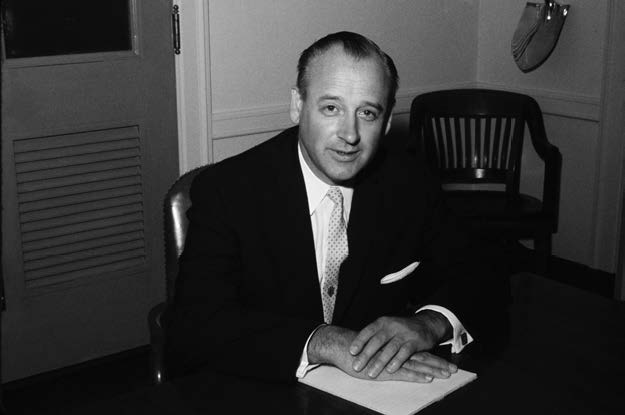 National Park Service director George B. Hartzog (1964–72). National Park Service History Collection.
National Park Service director George B. Hartzog (1964–72). National Park Service History Collection.
Hartzog maintained correspondence with Nauvoo Restoration leaders, calling himself “an enthusiastic supporter of the project from its inception” while accepting invitations to represent the National Park Service at significant events in the city.[29] In 1969 Hartzog attended the groundbreaking for the Church’s visitors’ center in Nauvoo, joining Church and national dignitaries including Nauvoo Restoration trustees David M. Kennedy and George W. Romney; Belle S. Spafford, president of the National Council of Women and of the Church’s General Relief Society; Hugh B. Brown; Harold B. Lee; Delbert L. Stapley; and Neal A. Maxwell. Two years later, Hartzog joined a similar cast for the building’s dedication, where he also spoke. On that occasion, Director Hartzog publicly revealed National Park interest in Nauvoo. “We of the National Park Service have watched with growing interest and admiration the unfolding restoration of this historic town,” Hartzog declared. “You have re-created here a vivid reminder of an important part of our national heritage—the setting not only of significant people and events of history but of a past way of life too. You have harmoniously combined old and new in a model exhibition of enlightened historic preservation.” Speaking of his own organization’s interest in historic preservation, Hartzog continued, “It is informative as well as inspiring to me to see what you have done here, for each year the National Park Service becomes more heavily involved in historic preservation. Although our image in the eyes of many still centers on the great natural parks, such as Yellowstone and Grand Canyon, fully two-thirds of the areas of the National Park System—about 180—were set aside because of historical value.”[30] He noted that this interest in historical sites would necessitate partnerships like the one created in Nauvoo. “Our interest in historic preservation extends far beyond the historic sites we administer. In line with what has been termed the ‘new federalism,’ we are also able to give help and encouragement to state, local, and private efforts. Our cooperative programs, featuring a partnership between the National Park Service and the private sector, are demonstrated right here in Nauvoo.”[31]
“The Secretary of the Interior has designated Nauvoo a National Historic Landmark, one of about 900 sites so honored to date as possessing exceptional value in illustrating the cultural heritage of our Nation,” Hartzog continued. “The determination of national significance—as opposed to state or local significance—required for Landmark status is the same criterion applied to prospective additions to the National Park System. . . . Few places in the United States deserve this distinction more than Nauvoo.”[32] As the million-dollar visitors’ center was being dedicated, the partnership between the National Park Service and the Church seemed strong.
Separating Church and State
So what happened? Why would a visitor to Latter-day Saint historic sites today find little representing the National Park Service? Similarly, why would someone studying the National Park Service or federal interaction in historic sites find few references to Nauvoo today?
Strain that drove the two organizations apart emerged shortly after Nauvoo’s designation as a National Historic Landmark in 1961 and the public appearance of the National Park Service director in town the next year. A week after his high-profile visit to Nauvoo in May 1962, Director Wirth received a complaint from an Illinois resident about National Park Service involvement. “Where in the U.S. is a like project? Where taxes from local, state & national sources are solicited to restore a religious temple or provide an extensive park around it? Do you believe in separation of church and State? We do. Therefore we oppose the restoration of Nauvoo by using taxes.”[33] In a more cordial way, the managing editor for the Reorganized Church’s press, Herald House, inquired later that summer “about the extent of federal government participation in the restoration work and the amount of federal financing involved in the project.”[34] Additionally, Herbert H. Kahler, chief of the division of history and archeology of the Park Service, was forced to respond to discussion that Nauvoo might be elevated as “a national historic site in nonfederal ownership.” He stressed that Director Wirth “wanted this to be considered not in terms of religious implications but rather as one of the great westward migrations.”[35] Nevertheless, questions persisted, with the Nauvoo Planning Commission inquiring in 1963 about “rumors that the National Park Service may be planning to take over part of Nauvoo as a National Historic Shrine.” Director Wirth quickly squelched the rumor.[36]
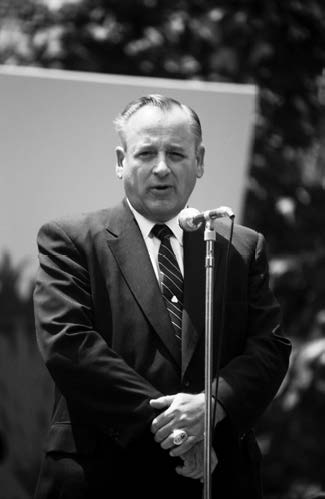 Director George B. Hartzog speaking at a National Park Service Summer in the Parks program. Photo by Cecil W. Stoughton, National Park Service History Collection.
Director George B. Hartzog speaking at a National Park Service Summer in the Parks program. Photo by Cecil W. Stoughton, National Park Service History Collection.
Following the public holding of hands by the Church and the National Park Service in restoring Nauvoo during the 1960s, both projects eventually took dramatically different turns. In July 1972, George Hartzog wrote a complimentary letter to Harold B. Lee, offering his “heartiest congratulations and good wishes . . . on the occasion of [his] election as President of the Church of Jesus Christ of Latter Day Saints. . . . It has been a pleasure, indeed, for me to know and work with you in Nauvoo,” Hartzog noted. “If there is any way in which I may serve you at any time, please let me know.”[37] Lee responded, “I sincerely appreciated your note. . . . I have come to value not only friends within the Church but friends like yourself outside whose counsel and whose fellowship we seek and appreciate very much. It was with pleasure that I had the brief meeting with you with reference to work now being done in Nauvoo.” Lee continued, “I believe that the beautiful visitors center with the few buildings which have been restored as near as possible to their original state, will provide not only a monument to the westward march of the early pioneers, but also to indicate to the visitors that those early members of the Church were indeed people of refinement and culture as their buildings and the work of their hands attested. Please be assured that we would appreciate any further counsel you may wish to give us with reference to this or other projects which come under your supervision.”[38]
Despite overtures for continued cooperation, within eighteen months neither Hartzog nor Lee was directing their respective organizations. By late 1972, Hartzog was embroiled in several political controversies. Earlier in his administration, Hartzog enacted the practice of shuttering parks and monuments for two days a week in response to Vietnam War–era budget cuts. At the same time, Hartzog repeatedly butted heads with U.S. president Richard Nixon over issues relating to the parks, personally alienating him when the Park Service revoked a permit for a close friend of the president to have special access to facilities at Biscayne National Monument. Hartzog later wrote, “The bell had begun to toll on my tenure as director.”[39] In December 1972, Hartzog was relieved of duty, replaced by an official from the Nixon White House, signaling for some a shift from civil service to partisan politics within the Park Service.[40]
In the case of the Church, leadership changes, including the deaths of early Nauvoo supporter President David O. McKay in 1970 and President Harold B. Lee in 1973, led to a shift in views for a restored Nauvoo. Even in Nauvoo Restoration’s founding, participants sensed that not all shared the strong connection between Nauvoo and American westward expansion, preferring instead that the site be used for more traditional proselytizing purposes. In 1964, T. Edgar Lyon, historical consultant to Nauvoo Restoration, wrote, “The road ahead does not look too cheery—some opposition is arising within the Church.”[41] Nauvoo Restoration secretary Rowena Miller summarized the challenge. “It will take the wisdom of a Solomon,” Miller cautioned, “to walk the tight-rope of historic interpretation [and] proselyting you people . . . have confronting you.”[42] Some of the concern centered around the high costs of restoration and the desire to place greater focus on proselytizing efforts.
In 1971 the board of Nauvoo Restoration was restructured, establishing even greater Church control. Project secretary Rowena Miller summarized the impact of the reorganization. “The restoration was administered as an historical project, as outlined in the Articles of Incorporation, and the purpose for which the corporation was set up. With two non-members on the Board of Trustees, the corporation had a standing in the nation as an historical restoration project. . . . After the death of President David O. McKay, who had supported the corporation in all of its activities, there were some in the officialdom of the Church who did not believe in the historical approach of the restoration.”[43] A year later, a Nauvoo Mission was created. The national narrative of westward expansion was pushed to the margins, replaced with proselytizing approaches that were, at times, at odds with the mission of the National Park Service.
Conclusion
For several years, the reach of Washington, DC, and one of its federal agencies extended directly to a historic rural Illinois town on a bend of the Mississippi River. During the tenures of National Park Service directors Conrad Wirth and George Hartzog as well as Church Presidents David O. McKay, Joseph Fielding Smith, and Harold B. Lee, the National Park Service and The Church of Jesus Christ of Latter-day Saints maintained a shared active relationship regarding Church historic sites. The arrangement was mutually beneficial for each organization. From the perspective of the National Park Service, Latter-day Saints represented a clean-cut counterpoint to the culture wars that engulfed America during the 1960s and ’70s. The Latter-day Saint story of bravely stepping out into the frontier during the nineteenth century melded with modern efforts to defend American exceptionalism while exploring space-age frontiers. For the Church, cooperation with a federal organization like the National Park Service brought expertise and credibility to its historic site endeavors. National standing and interpretive control were especially important in a place like Nauvoo, where the faith’s story was inserted into the narrative of westward expansion but also framed against alternate historical interpretations offered at neighboring sites by the Reorganized Church of Jesus Christ.
The relationship’s demise reflects realities within both organizations and changing dynamics between the Church and the federal government. The National Park Service became more political, removing some of the strongest proponents for the partnership, making it increasingly problematic to cooperate in overtly religious projects. At the same time, Church historic sites like Nauvoo became more religious, pushing evangelizing messages and later, through the reconstruction of the temple, shaping the site as a spiritual retreat for the faithful. However, for at least a decade during the twentieth century, the National Park Service and the Church worked hand-in-hand to make Church historic sites “a resting-place for the weary traveler” where they could “contemplate the glory of Zion” (Doctrine and Covenants 124:60).
Notes
[1] In addition to the National Park Service, agencies that merit examination for their federal and Church interactions include the Bureau of Land Management, the Bureau of Indian Affairs, and the Departments of Justice and Education, among others.
[2] National Park Service, “District of Columbia,” nps.gov.
[3] Lisa Benton-Short, The National Mall: No Ordinary Public Place (Toronto: University of Toronto Press, 2016), 69, 94, 241; James F. Cooper, “Foreword,” in The National Mall: Rethinking Washington’s Monumental Core, ed. Nathan Glazer and Cynthia R. Field (Baltimore: Johns Hopkins University Press, 2008), vii.
[4] Brooke Sabin, “5 National Parks in D.C. That the Locals Love,” Wheretraveler.com.
[5] National Park Service, “About Us: Our Mission,” nps.gov. See also An Act to Establish a National Park Service, 25 August 1916, 39 Stat. 535.
[6] An Act to Set Apart a Certain Tract of Land Lying Near the Headwaters of the Yellowstone River as a Public Park, 1 March 1872, 17 Stat. 32.
[7] An Act for the Preservation of American Antiquities, 8 June 1906, 34 Stat. 225.
[8] An Act to Establish a National Park Service, 25 August 1916, 39 Stat. 535.
[9] National Park Service, “Quick History of the National Park Service,” nps.gov.
[10] Historic Sites Act of 1935, 16 U.S.C. sec. 461–62.
[11] National Park Service, “The National Register of Historic Places and the National Historic Landmarks Program,” nps.gov; see also National Park Service, “Roots of the National Historic Landmarks Program,” nps.gov.
[12] National Park Service, “What Is the National Register of Historic Places?,” nps.gov. All National Historic Landmark sites are automatically included in the National Register of Historic Places.
[13] Examples include the Roger Williams National Memorial in Rhode Island and the San Antonio Missions in Texas.
[14] Nancy Wiechec and Chaz Muth, “National Parks: Places of Wonder, History, Spiritual Refuge,” National Catholic Reporter, 29 October 2016.
[15] Historic Sites Act of 1935, 16 U.S.C. sec. 462.
[16] Lynn Ross-Bryant, Pilgrimage to the National Parks (New York: Routledge, 2013), 153.
[17] Among many areas, Latter-day Saints actively engaged in military service in the Spanish-American War and World Wars I and II, in political activism like women’s suffrage, and in business and educational pursuits.
[18] Kathleen Flake, “Re-placing Memory: Latter-day Saint Use of Historical Monuments and Narrative in the Early Twentieth Century,” Religion and American Culture: A Journal of Interpretation 13, no. 1 (2003): 80. Supporting this view, Latter-day Saint Apostle Francis M. Lyman declared at the dedication of the monument to Joseph Smith’s birth in Sharon, Vermont, “And now we come back. The west and the east meet here on this blessed occasion. . . . We want your friendship; and you have ours.” Proceedings at the Dedication of the Joseph Smith Memorial Monument (Salt Lake City: self-pub., 1906), 17.
[19] Lynn Ross-Bryant, Pilgrimage to the National Parks (New York: Routledge, 2013), 153.
[20] Susan Sessions Rugh, Are We There Yet? The Golden Age of American Family Vacations (Lawrence: University Press of Kansas, 2008), 2–5.
[21] Cited in Lynn Ross-Bryant, Pilgrimage to the National Parks (New York: Routledge, 2013), 161.
[22] “Nauvoo Restoration Studied by Church and Federal Experts,” Nauvoo Independent, 10 May 1962, NRI Historical Files, Nauvoo, Illinois. While beyond the scope of this study, J. Willard Marriott and his involvement is a significant connection between Washington, DC, and Latter-day Saint historic sites. For additional information about the restoration of Nauvoo, see Scott C. Esplin, Return to the City of Joseph: Modern Mormonism’s Contest for the Soul of Nauvoo (Urbana: University of Illinois Press, 2018).
[23] “City Co-operation A Necessity,” Nauvoo Independent, cited in Journal History, 10 May 1962, 6.
[24] “Nauvoo Restoration Studied by Church and Federal Experts,” Nauvoo Independent, 10 May 1962, NRI Historical Files, Nauvoo, IL.
[25] J. LeRoy Kimball, “An Outline for the Restoration of Nauvoo,” 11 December 1961, NRI Historical Files, Nauvoo, IL.
[26] National Park Service, “Illinois NHL Nauvoo Historic District,” Record Group 79, National Archives, College Park, MD.
[27] J. LeRoy Kimball, “An Outline for the Restoration of Nauvoo,” 11 December 1961, NRI Historical Files, Nauvoo, IL.
[28] “Report of Progress and Development by the President to the Board of Trustees of Nauvoo Restoration, Incorporated,” 25 June 1964, 4–5, NRI Historical Files, Nauvoo, IL. Following the formation of Nauvoo Restoration, Incorporated, the National Park Service issued a grant to David E. Miller, professor of history at the University of Utah, to conduct a yearlong historical survey of Nauvoo. David E. Miller, Westward Migration of the Mormons with Special Emphasis on the History of Nauvoo (Salt Lake City: University of Utah, 1963).
[29] George B. Hartzog Jr. to L. LeRoy Kimball, 1 May 1969, Clemson University Archives, Clemson, SC.
[30] In a draft version of this address, Hartzog added, “As the System expands in the future, the ratio will become even more disproportionate. Opportunities to acquire unspoiled natural parks will decrease, but history—and thus historic sites—will continue to be made.”
[31] George B. Hartzog Jr., “Remarks of George B. Hartzog, Jr., Director of the National Park Service, at Dedication of Visitor Center at Nauvoo, Illinois,” 4 September 1971, Clemson University Archives.
[32] Hartzog Jr., “Dedication of Visitor Center at Nauvoo.”
[33] Minnie Prior to Director of the National Park Service, 14 May 1962, “Illinois NHL Nauvoo Historic District,” Record Group 79, National Archives. Herbert E. Kahler, Park Service chief of the division of history and archaeology, responded and said that recognition of Nauvoo was “not on the basis of religious contributions but on the role this group played in the settlement of the West.” Herbert E. Kahler to Minnie Prior, 31 May 1962, “Illinois NHL Nauvoo Historic District,” Record Group 79, National Archives.
[34] Roger Yarrington to the National Park Service, 27 August 1962. “Illinois NHL Nauvoo Historic District,” Record Group 79, National Archives. Park Service officials clarified that they were “not participating in the restoration work itself.”
[35] Herbert H. Kahler to Regional Director, Region Five, 31 May 1962, “Illinois NHL Nauvoo Historic District,” Record Group 79, National Archives.
[36] John T. Moffitt to the National Park Service, 3 May 1963; Conrad L. Wirth to John T. Moffitt, 22 May 1963, “Illinois NHL Nauvoo Historic District,” Record Group 79, National Archives.
[37] George B. Hartzog Jr. to Harold B. Lee, 20 July 1972, Clemson University Archives.
[38] Harold B. Lee to George B. Hartzog Jr., 10 August 1972, Clemson University Archives.
[39] George B. Hartzog Jr., Battling for the National Parks (Mount Kisco, NY: Moyer Bell, 1988), 237–38.
[40] Conrad L. Wirth, Parks, Politics, and the People (Norman: University of Oklahoma Press, 1980), 365.
[41] T. Edgar Lyon to William E. Berrett, 13 November 1964, in Lyon, Teacher in Zion, 280.
[42] Rowena Miller to Rex Sohn, 26 April 1967, NRI Historical Files, Nauvoo, IL.
[43] Rowena Miller to J. Alan Blodgett, 6 July 1981, NRI Historical Files, Nauvoo, IL.
